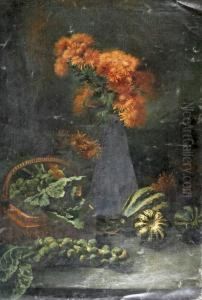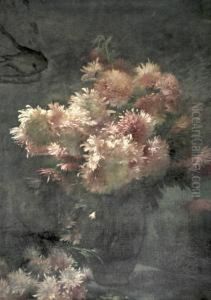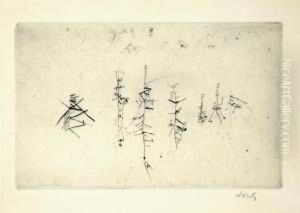Franz Wolf Paintings
Franz Wolf was an Austrian artist known primarily for his work as a lithographer and painter. Born on November 17, 1795, in Vienna, Austria, Wolf became an important figure in the Viennese art scene during the first half of the 19th century. He was a contemporary of artists such as Ferdinand Georg Waldmüller and Peter Fendi, who were also significant contributors to Austrian art during this period.
Wolf's education in the arts began at the Vienna Academy of Fine Arts, where he studied under the guidance of Hubert Maurer and Johann Baptist von Lampi. His time at the academy allowed him to hone his skills in drawing and painting, but it was his talent in lithography that distinguished him. Lithography, a printmaking technique that was relatively new at the time, involved creating images on limestone or metal plates that could then be printed multiple times. This medium was gaining popularity for its ability to produce high-quality reproductions of artworks and illustrations for books.
Throughout his career, Franz Wolf created a vast number of lithographs, many of which depicted landscapes, cityscapes, and genre scenes of Viennese life. His works were appreciated for their detail and the ability to capture the essence of the subjects he portrayed. He was particularly adept at rendering textures and atmospheric effects in his lithographs, which added a sense of depth and realism to his images.
In addition to lithography, Wolf applied his artistic talents to painting, although his painted works are less well-known and fewer in number compared to his prints. His paintings often shared similar themes with his lithographs, focusing on landscapes and everyday scenes. His style in painting reflected the Biedermeier period, an era in Central Europe between 1815 and 1848 characterized by a conservative and domestic aesthetic in the arts.
Franz Wolf's contributions to the field of lithography and his depictions of early 19th-century Vienna have given him a place in the history of Austrian art. He passed away on December 21, 1859, in his hometown of Vienna. Today, his works can be found in various art collections and museums, serving as valuable records of the time in which he lived and worked.










